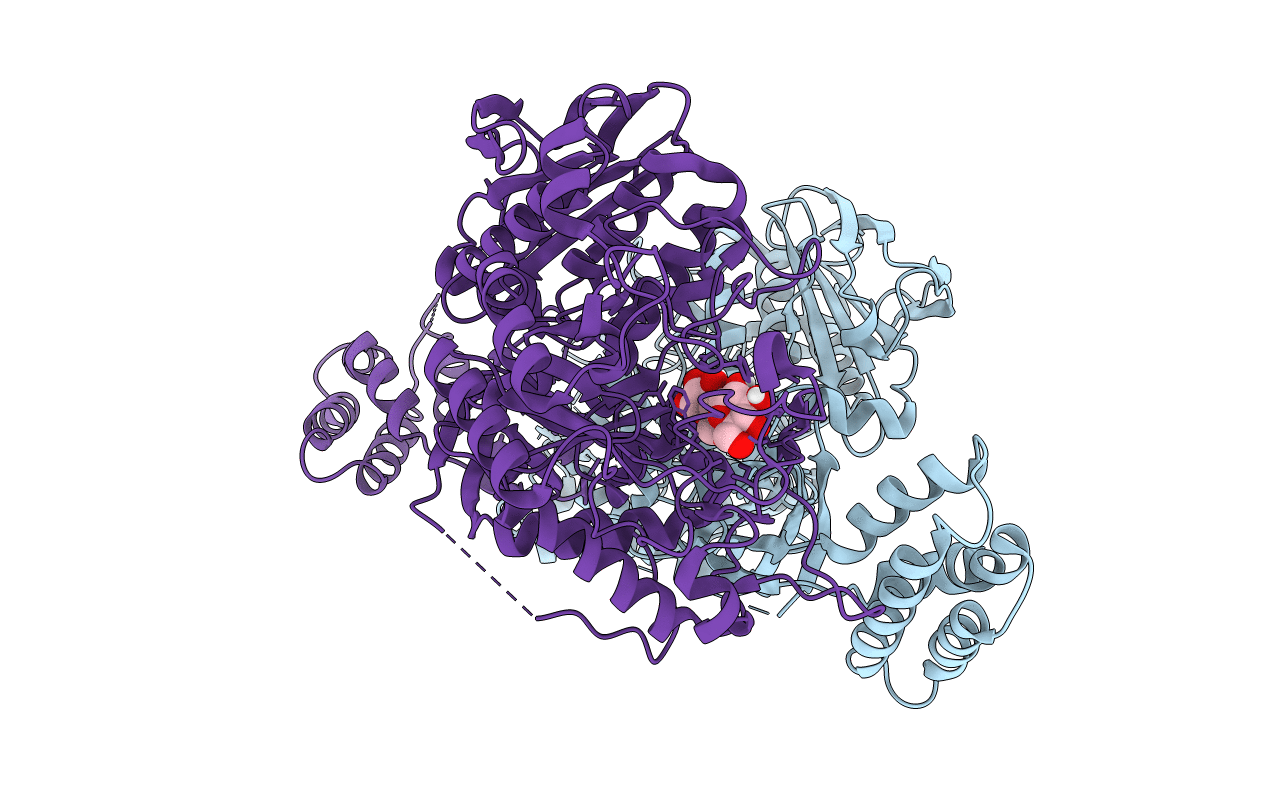
Deposition Date
2015-07-13
Release Date
2015-12-09
Last Version Date
2024-01-10
Entry Detail
PDB ID:
5CIM
Keywords:
Title:
Structure of Mycobacterium thermoresistibile GlgE in complex with maltose (cocrystallisation with maltose-1-phosphate) at 3.32A resolution
Biological Source:
Source Organism:
Mycobacterium thermoresistibile ATCC 19527 (Taxon ID: 1078020)
Host Organism:
Method Details:
Experimental Method:
Resolution:
3.32 Å
R-Value Free:
0.21
R-Value Work:
0.17
R-Value Observed:
0.18
Space Group:
P 21 21 21


